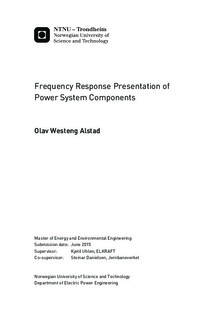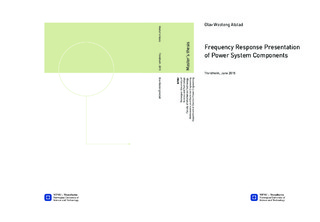| dc.description.abstract | This master thesis presents a method for stability analysis. The dynamics of an electric system are described through frequency dependent impedances and admittances. This is presented with the basis of an electric traction vehicle. The frequency responses of the vehicle are revealed and verified through tests, compensations and analyzes of test measurements.
After the introduction of advance electric traction vehicles, the electric traction system has experienced problems related to low frequency power oscillations. To solve these problems the dynamics of the vehicle is modeled. This is conducted from an input-output approach at the interface of the vehicle seen from the rest of the system. The input and output are small changes in voltage and current from a linearized operation point. The vehicle is presented as a set of four admittances. These admittances are functions of the oscillation frequency, further referred to as frequency responses.
A description of an electric oscillating system can be done by using modulated signals. In this thesis, current and voltage are described as amplitude- and phase modulated components. Calculations with modulated components requires an extension of the phasor system. This extension, and relevant calculation rules and examples, are presented in this thesis.
Further, tests to reveal the frequency responses of the vehicle is presented. Measurements from the tests show deviations from the specified excitation voltage. Analysis of the test measurements explains some of these deviations. Since the frequency responses do not depend on the excitation voltage, the tests are verified as sufficient for their purpose. After compensating for the test topology, a set of frequency responses for the vehicle are found. They are considered as correct, but have limitations. The numeric frequency responses are extracted to transfer functions. At last, usage of the transfer functions in stability analysis with several vehicles is presented. | |

